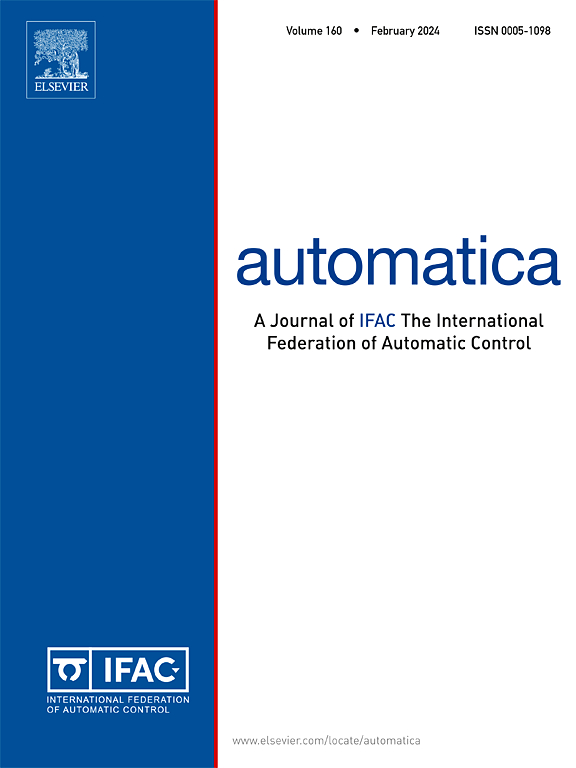基于切换函数的无人机群最优主动容错二部共识控制
IF 5.9
2区 计算机科学
Q1 AUTOMATION & CONTROL SYSTEMS
引用次数: 0
摘要
利用切换函数和饱和函数的积分方法,研究了具有非同向未知故障和干扰的飞翼无人机群的最优主动容错二部共识控制问题。采用观测器-控制器框架防止跟踪无人机之间的误差传播。在此基础上,提出了一种主动容错控制策略,以提高系统的暂态性能。该策略防止了过多的反向输入对系统造成的突然冲击,避免了在基于Nussbaum函数的容错控制方法中经常出现的过多调整输入引起的状态抖振。此外,新提出的切换准则即使在存在干扰和多次故障方向变化的情况下也能直接匹配期望的工作模式,从而避免了无效切换,增强了所设计控制器的鲁棒性。为了进一步提高无人机的瞬态性能,提出了一种基于强化学习(RL)的预置性能反演控制方法。该方法优化了输出调节,节约了能耗,降低了软饱和对系统性能的影响。最后,仿真结果验证了该方案的有效性和优越性。本文章由计算机程序翻译,如有差异,请以英文原文为准。
Switching function-based optimal active fault-tolerant bipartite consensus control for UAV swarm
This paper studies the problem of optimal active fault-tolerant bipartite consensus control for flying wing unmanned aerial vehicle (UAV) swarm with nonidentical and unknown direction faults (NUDFs) and disturbances by integrating switching and saturation functions. An observer–controller framework is employed to prevent error propagation among follower UAVs. Based on this framework, an active fault-tolerant control strategy is proposed to improve the system’s transient performance. This strategy prevents sudden shocks from excessive reverse inputs on the system and avoids state chattering caused by excessive adjustment inputs, which often occur in the Nussbaum function-based fault-tolerant control method. Additionally, the newly proposed switching criterion directly matches the desired operating mode, even in the presence of disturbances and multiple fault direction changes, thus avoiding ineffective switching and enhancing the robustness of the designed controller. To further improve the UAVs’ transient performance, a reinforcement learning (RL)-based preset performance backstepping control method is introduced. This method optimizes output regulation, saves energy consumption, and reduces the impact of soft saturation on system performance. Finally, simulation results validate the effectiveness and superiority of the proposed scheme.
求助全文
通过发布文献求助,成功后即可免费获取论文全文。
去求助
来源期刊

Automatica
工程技术-工程:电子与电气
CiteScore
10.70
自引率
7.80%
发文量
617
审稿时长
5 months
期刊介绍:
Automatica is a leading archival publication in the field of systems and control. The field encompasses today a broad set of areas and topics, and is thriving not only within itself but also in terms of its impact on other fields, such as communications, computers, biology, energy and economics. Since its inception in 1963, Automatica has kept abreast with the evolution of the field over the years, and has emerged as a leading publication driving the trends in the field.
After being founded in 1963, Automatica became a journal of the International Federation of Automatic Control (IFAC) in 1969. It features a characteristic blend of theoretical and applied papers of archival, lasting value, reporting cutting edge research results by authors across the globe. It features articles in distinct categories, including regular, brief and survey papers, technical communiqués, correspondence items, as well as reviews on published books of interest to the readership. It occasionally publishes special issues on emerging new topics or established mature topics of interest to a broad audience.
Automatica solicits original high-quality contributions in all the categories listed above, and in all areas of systems and control interpreted in a broad sense and evolving constantly. They may be submitted directly to a subject editor or to the Editor-in-Chief if not sure about the subject area. Editorial procedures in place assure careful, fair, and prompt handling of all submitted articles. Accepted papers appear in the journal in the shortest time feasible given production time constraints.
 求助内容:
求助内容: 应助结果提醒方式:
应助结果提醒方式:


